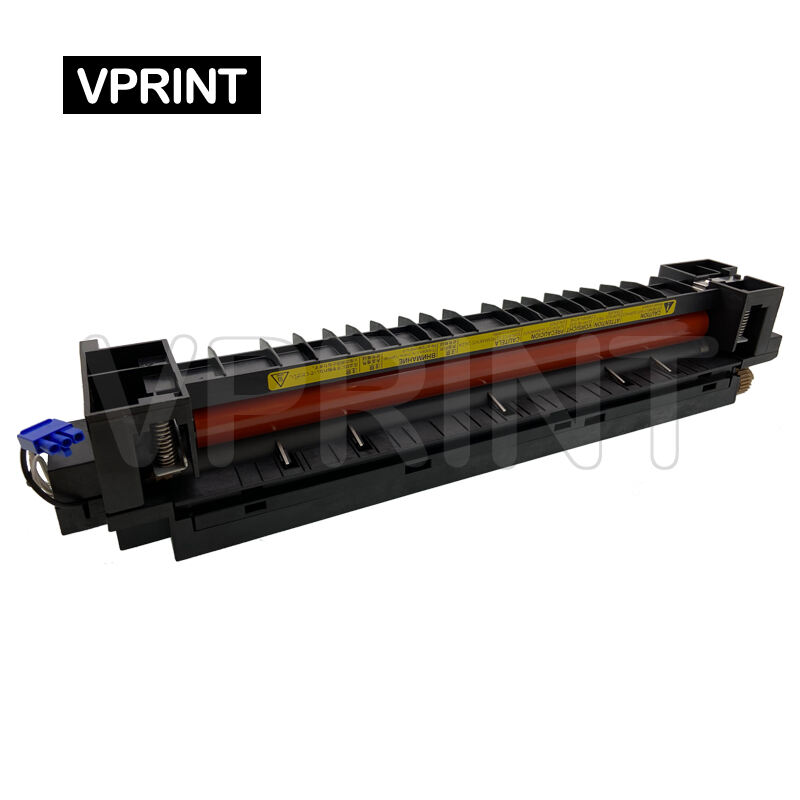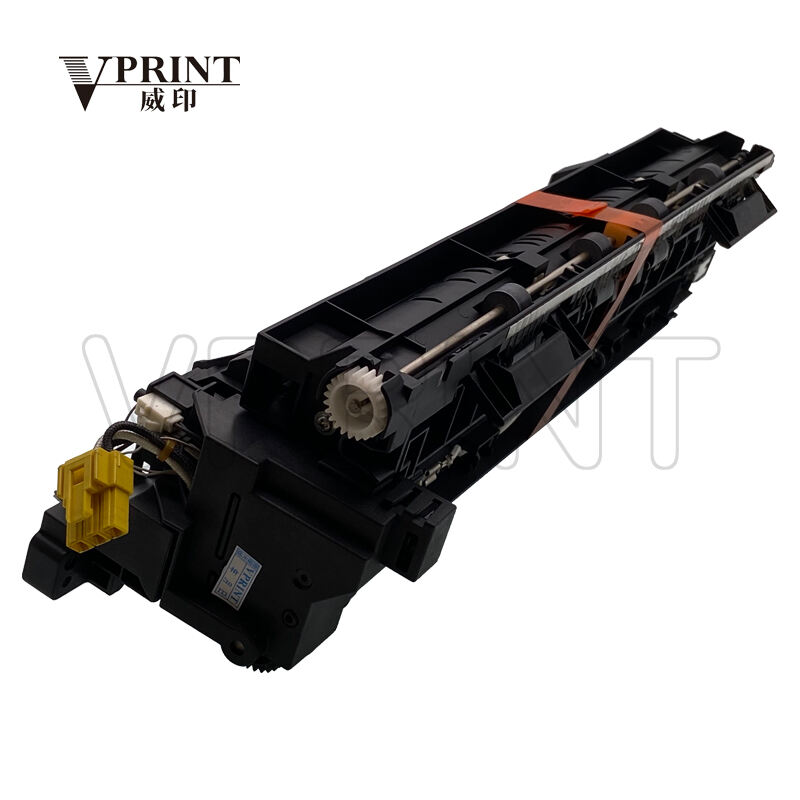What Is a Kyocera Fuser and Why Is It Important?
In the world of laser printing, the fuser is a silent workhorse that transforms loose toner into permanent, smudge-free prints. For Kyocera printers—renowned for their durability and efficiency in offices, schools, and businesses—the Kyocera Fuser plays a critical role in delivering consistent, high-quality results. Without this essential component, even the most advanced printer would produce prints that smudge, fade, or fail to last. This guide explains what a Kyocera Fuser is, how it works, and why it is vital for reliable printing, helping users understand its importance and how to keep it functioning well.
What Is a Kyocera Fuser?
A Kyocera Fuser is a key component in Kyocera laser printers and multifunction devices, responsible for bonding toner powder to paper. Laser printing relies on electrostatic charges to transfer toner—tiny, dry particles of ink—to paper, but this toner is only loosely attached at first. The fuser solves this problem by using heat and pressure to melt the toner, making it fuse permanently into the paper fibers.
Kyocera Fusers are engineered specifically for Kyocera printer models, ensuring a perfect fit and optimal performance. They consist of two main parts: a heated roller (or heating element) and a pressure roller. The heated roller reaches temperatures between 180°C and 220°C (356°F and 428°F) to melt the toner, while the pressure roller presses the paper against the heated roller, ensuring the melted toner adheres evenly across the page.
Kyocera designs its fusers with durability in mind, using high-quality materials that resist wear from heat, pressure, and repeated use. Whether in a small desktop printer or a high-volume industrial device, each Kyocera Fuser is tailored to the printer’s speed, paper size, and workload, ensuring it can handle the demands of daily use without compromising quality.
How a Kyocera Fuser Works in the Printing Process
To appreciate the Kyocera Fuser’s importance, it helps to understand its place in the laser printing process:
- Toner Preparation and Transfer: First, the printer creates an electrostatic image on a photoreceptor drum, which attracts toner particles. This toner is then transferred onto the paper, forming the text or image—but at this stage, it is only loosely stuck, like dust on a magnet.
- The Fusing Stage: The paper then moves into the fuser unit. As it passes between the heated roller and pressure roller, the heat melts the toner particles, and the pressure presses them into the paper’s surface. This process transforms the loose toner into a permanent part of the paper.
- Cooling and Setting: After leaving the fuser, the paper cools quickly, allowing the melted toner to harden. This ensures the print remains smudge-free even when touched immediately or exposed to light moisture.
Kyocera Fusers are equipped with precise temperature controls and sensors to adjust heat levels based on paper type. For example, printing on thick cardstock requires more heat to ensure the toner bonds, while thin paper needs less heat to avoid damage. This adaptability ensures consistent results across different materials, from standard office paper to labels and envelopes.

Why the Kyocera Fuser Is Important for Print Quality
The Kyocera Fuser has a direct and significant impact on the quality of your prints. Even if the printer transfers toner perfectly, a faulty fuser can ruin the final result. Here are the key reasons why the Kyocera Fuser is essential:
Ensures Toner Adhesion and Smudge Resistance
The most basic function of the Kyocera Fuser is to make sure toner stays on the paper. A well-functioning fuser melts the toner evenly, so it bonds securely to the paper fibers. This means prints can be handled immediately without smudging, and they remain sharp even after being folded, stacked, or exposed to light moisture (like a spilled drink).
A failing fuser, however, leads to smudged prints. You might notice toner rubbing off onto your hands, smearing when you write on the paper, or fading when the page is bent. For important documents like contracts, reports, or invoices, this lack of adhesion makes the prints unprofessional and unreliable—something the Kyocera Fuser prevents when working correctly.
Maintains Print Sharpness and Clarity
Sharp, clear text and images depend on the Kyocera Fuser’s ability to melt toner without causing it to spread. When toner melts evenly under controlled heat and pressure, it retains the precise edges of letters, lines, and graphics. If the fuser’s heat is too low, toner particles won’t melt enough, leaving gaps or fuzzy edges. If the heat is too high, toner can over-melt and bleed, blurring text or merging colors in images.
Kyocera Fusers are designed to maintain consistent heat distribution across the entire roller surface, ensuring every part of the page receives the same treatment. This uniformity is especially important for small fonts, detailed graphics, or color prints, where even minor blurring can make the content hard to read or unappealing.
Protects Paper and Prevents Damage
The Kyocera Fuser also plays a role in keeping paper in good condition. High-quality fusing ensures the paper remains flat and undamaged, while a faulty fuser can cause issues like:
- Paper Curling: Uneven heat or pressure can make the paper curl upward or downward as it exits the printer. This is because heat causes paper fibers to expand, and uneven heating leads to uneven expansion, ruining the paper’s flatness.
- Discoloration or Burning: Excessive heat can yellow paper, leave brown spots, or even burn small holes, especially in lightweight or sensitive papers like photo paper.
- Wrinkling: A misaligned or worn pressure roller can crease the paper as it passes through, creating unsightly wrinkles that distract from the print content.
Kyocera Fusers are calibrated to match different paper weights and types, adjusting heat and pressure automatically to prevent these issues. This ensures your prints look professional, with flat, unmarked paper every time.
Ensures Consistency in High-Volume Printing
In busy offices or schools, where printers handle hundreds of pages daily, consistency is key. A reliable Kyocera Fuser produces the same high-quality results from the first page to the last, even during long print jobs. This means no variation in sharpness, no sudden smudging, and no unexpected paper damage—critical for maintaining productivity and professionalism.
A worn or faulty fuser, by contrast, leads to inconsistent results. You might notice some pages printing perfectly while others smudge, or text that fades halfway through a document as the fuser overheats. This inconsistency wastes time, paper, and toner, making the Kyocera Fuser’s reliability essential for efficient operations.
Common Kyocera Fuser Issues and Their Impact
Like all printer components, Kyocera Fusers wear out over time, and their performance declines. Recognizing common issues helps users address problems early and avoid costly downtime:
Heat-Related Problems
- Insufficient Heat: Caused by a worn heating element or faulty temperature sensor, this leads to smudged prints and poor toner adhesion.
- Overheating: Often due to blocked ventilation or a malfunctioning thermostat, overheating causes paper curling, discoloration, or even printer shutdowns to prevent damage.
Roller Wear and Damage
- Worn Rollers: The heated and pressure rollers are coated in rubber or other heat-resistant materials that wear down with use. Worn rollers cause uneven pressure, leading to smudged areas or light, faded prints.
- Scratched or Damaged Rollers: Scratches from debris (like staples or paper clips) or physical damage create marks on prints, such as dark streaks or missing toner in specific areas.
Alignment Issues
- Misaligned Rollers: If the fuser is not properly seated or becomes loose, the rollers may misalign. This causes uneven pressure, leading to inconsistent print quality or paper jams.
Error Messages
Kyocera printers often display error codes (like “Fuser Error” or codes such as C7120) when the fuser malfunctions. These messages alert users to issues that need attention, from overheating to sensor failures, helping prevent further damage.
Maintaining Your Kyocera Fuser for Longevity
Proper maintenance extends the life of a Kyocera Fuser and ensures consistent performance. Here are simple steps to follow:
- Follow Recommended Print Volumes: Kyocera Fusers have a rated lifespan (typically 100,000–300,000 pages, depending on the model). Exceeding the printer’s monthly duty cycle accelerates wear, so stay within recommended limits.
- Use Quality Paper: Low-quality, thick, or damaged paper strains the fuser. Use Kyocera-recommended paper types and weights to avoid excessive heat or pressure.
- Keep the Printer Clean: Dust and debris block ventilation, causing the fuser to overheat. Regularly clean the printer’s vents and interior (following safety guidelines) to maintain airflow.
- Replace When Needed: When prints show consistent smudging, curling, or error messages appear, it’s time to replace the fuser. Always use genuine Kyocera replacement fusers to ensure compatibility and performance.
FAQ
What is the lifespan of a Kyocera Fuser?
Kyocera Fusers typically last between 100,000 and 300,000 pages, depending on the printer model, usage frequency, and paper type. High-volume printers may need replacements more often.
Can I use a non-genuine fuser in my Kyocera printer?
It’s not recommended. Non-genuine fusers may not fit properly, have inconsistent heating, or wear quickly, leading to poor print quality, paper jams, or even printer damage. Genuine Kyocera fusers are designed for optimal performance.
How do I know if my Kyocera Fuser needs replacement?
Signs include smudged prints, paper curling, error messages, uneven print quality, or toner that rubs off easily. If these issues persist after checking other components (like toner cartridges), the fuser likely needs replacement.
Does the Kyocera Fuser affect color prints differently than black-and-white?
Yes. Color toner requires precise heat control to prevent colors from bleeding into each other. A faulty fuser may cause color streaks, uneven color density, or smudging that’s more noticeable in color prints.
Can a Kyocera Fuser be repaired, or must it be replaced?
Most fuser issues require replacement. Fusers are complex, heat-sensitive components, and repairs often fail to restore full functionality. Replacing with a genuine Kyocera fuser ensures reliable performance.

